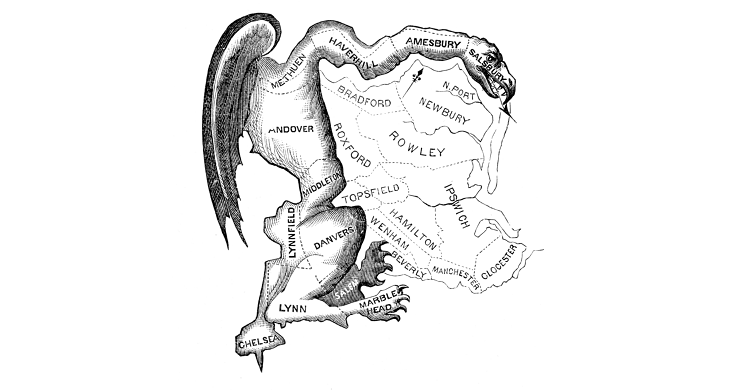2016 Congressional District Boundaries

Data
House of Representatives Election Results
Source
U.S. Election Atlas
Find on PolicyMap
- Demographics
- Elections
- House of Representatives
- Elections
Every ten years, states are apportioned a number of seats in the U. S. Congress based on the results of the decennial census, and they redraw congressional district boundaries to evenly distribute representation across the state. Every so often, though, those boundaries get redrawn in the intervening time. This just happened in three states: Florida, North Carolina, and Virginia.
Background
North Carolina’s redistricting has made news, as it’s the result of a federal court case finding that the original districts, in place from 2013-2015, were illegally gerrymandered, discriminating on the basis of race or ethnicity. The state legislature drew new boundaries, which are currently in place, though the state is appealing the decision to the Supreme Court. There’s a separate ongoing case regarding state legislative districts
in North Carolina, and that’s still pending.
Florida’s redistricting occurred for similar reasons, though it was the result of state court cases, not federal court. The state legislature did not redraw districts, so the state court itself drew the new districts, and they’re currently in place.
Virginia’s redistricting follows a similar story. A federal court ruled that the districts violated the Voting Rights Act. The Supreme Court ordered the trial court to reconsider its ruling, and after further consideration, the trial court maintained that it was still a violation. The state legislature did not redraw the districts, so a new map was drawn up by the federal courts.
So what does this have to do with data?
The new boundaries are on PolicyMap, so you can see them in the Location bar and in map boundaries. But data for the new boundaries is a little problematic. The Census’s American Community Survey (ACS) releases data at the congressional district level, which we have available. However, the latest data, representing 2011-2015, are based on the previous boundaries. Next year’s update in December will account for the new districts, but in the meantime, we’re left with boundaries that don’t yet have correct data.
If you go to the Maps page and go to a congressional district from the location bar, it will take you to the latest version of the district.
However, all ACS data appears at the old boundaries. In the map below, you can see the orange outline of North Carolina’s newly redrawn 8th district not matching the congressional district data shown underneath:
Keep in mind, if you’re not looking at Florida, North Carolina, or Virginia, these changes to congressional districts don’t affect you (as far as data goes).
If you look at our election results data, the boundaries match the year of the data. If you look at the latest data for the 2016 election, it will be mapped to the new boundaries. If you look at data for the 2012 and 2014 elections, the boundaries for those elections will show. And if you look at the older data for the 2004-2010 elections, the boundaries drawn from the 2000 Census will show.
Reports
When you make a Community Profile or Rental Housing report on PolicyMap, the report uses ACS data for congressional districts. For districts that have changed, however, the reports will now aggregate data from smaller geographies like tracts or block groups. It will be far more accurate, since the districts cover very different areas then they used to, but less precise, since tracts and block groups don’t nest perfectly within congressional districts.
Keep in mind that in December 2017, when the new ACS data is released at the new boundaries, all district reports on PolicyMap will be made using district-level data.